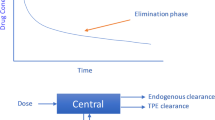Abstract
Introduction
Diffuse alveolar hemorrhage (DAH) is a life-threatening condition with an obscure etiology and pathogenesis. It is associated with many drugs and diseases including chemotherapy, hematopoietic stem cell transplantation, and autoimmune disorders. This retrospective study reports our experience with 23 patients who had DAH and received intravenous recombinant activated Factor VIIa (rFVIIa).
Methods
We performed a retrospective chart review of patients who received intravenous rFVIIa for DAH at a tertiary care university hospital between January 1, 2003 and May 31, 2013. We report demographics, etiology of DAH, frequency and total dose of intravenous rFVIIa, effect of rFVIIa on DAH, and morbidity and mortality.
Results
Mean age was 47 ± 19 years. There were 13 men and 10 women. Nine patients had Anti-neutrophil cytoplasmic antibody (ANCA) vasculitis, two had systemic lupus erythematosus, three had Good pasture’s syndrome, seven were post-bone marrow transplant, one had idiopathic thrombocytopenic purpura, and one had cryoglobulinemia. Treatment in the ICU was required for 22 patients of whom 18 were intubated and on mechanical ventilation; one patient was treated on general medical service. All patients received 35–120 mcg/kg rFVIIa every 2 h until hemostasis was achieved or treatment was judged to be inadequate. In 22/23 patients, bleeding resolved with rFVIIa therapy. The mean dose to control bleeding was 5 ± 3 mg. Eight patients died (36 %) of their underlying condition; six of them had received bone marrow transplant, while two had ANCA vasculitis. Deaths were due to multiorgan failure, sepsis, and progressive underlying disease. No overt, clinically obvious adverse thrombotic events were observed with the use of rFVIIa.
Conclusion
Activated Factor VII can achieve hemostasis in patients with diffuse alveolar hemorrhage.




Similar content being viewed by others
References
Lara AR, Schwarz MI (2010) Diffuse alveolar hemorrhage. Chest 137(5):1164–1171
Afessa B et al (2002) Outcome of diffuse alveolar hemorrhage in hematopoietic stem cell transplant recipients. Am J Respir Crit Care Med 166(10):1364–1368
Carr ME Jr, Martin EJ (2004) Recombinant Factor VIIa: clinical applications for an intravenous hemostatic agent with broad-spectrum potential. Expert Rev Cardiovasc Ther 2(5):661–674
Hicks K, Peng D, Gajewski JL (2002) Treatment of diffuse alveolar hemorrhage after allogeneic bone marrow transplant with recombinant factor VIIa. Bone Marrow Transplant 30(12):975–978
Meijer K et al (2000) Successful treatment of massive hemoptysis in acute leukemia with recombinant factor VIIa. Arch Intern Med 160(14):2216–2217
Heslet L et al (2006) Successful pulmonary administration of activated recombinant factor VII in diffuse alveolar hemorrhage. Crit Care 10(6):R177
Henke D, Falk RJ, Gabriel DA (2004) Successful treatment of diffuse alveolar hemorrhage with activated factor VII. Ann Intern Med 140(6):493–494
Levy JH et al (2006) Recombinant factor VIIa in patients with coagulopathy secondary to anticoagulant therapy, cirrhosis, or severe traumatic injury: review of safety profile. Transfusion 46(6):919–933
O’Connell KA et al (2006) Thromboembolic adverse events after use of recombinant human coagulation factor VIIa. JAMA 295(3):293–298
Rudisill CN et al (2006) Implementing guidelines for the institutional use of factor VIIa (recombinant): a multidisciplinary solution. Am J Health Syst Pharm 63(17):1641–1646
Conflict of interest
The authors report no real or potential conflict of interest.
Author information
Authors and Affiliations
Corresponding author
Rights and permissions
About this article
Cite this article
Pathak, V., Kuhn, J., Gabriel, D. et al. Use of Activated Factor VII in Patients with Diffuse Alveolar Hemorrhage: A 10 Years Institutional Experience. Lung 193, 375–379 (2015). https://doi.org/10.1007/s00408-015-9720-z
Received:
Accepted:
Published:
Issue Date:
DOI: https://doi.org/10.1007/s00408-015-9720-z




